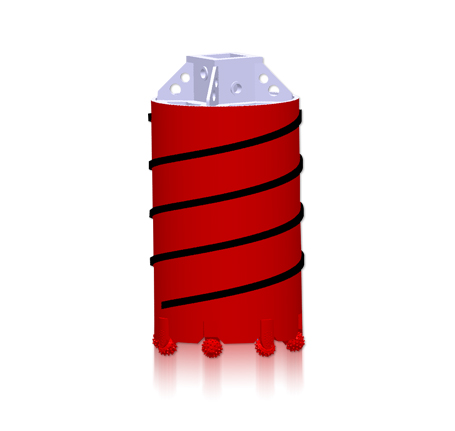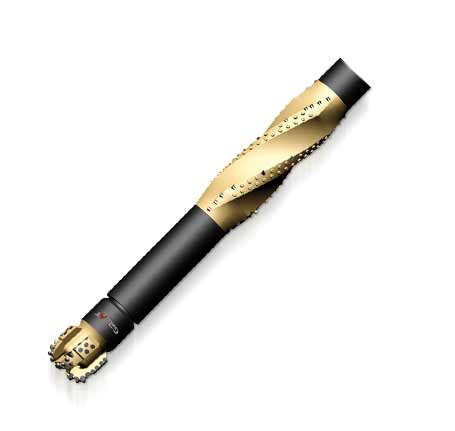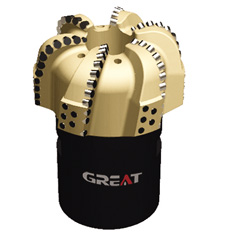Introduction
In 2025, tricone bits continue to be of paramount importance across multiple industries in Europe. These adaptable drilling tools, distinguished by their three-cone configuration, are indispensable for effectively penetrating diverse rock formations. Their applications span the energy, mining, and construction sectors, propelled by technological progress and the region’s ongoing infrastructure development imperatives.
1. Oil and Gas Industry
1.1 Exploration and Production in Conventional Reserves
The North Sea, one of Europe’s principal oil and gas production regions, still heavily relies on tricone bits in drilling operations. Despite the long-established nature of these fields, there remains substantial exploration and production activity. As companies strive to extract remaining reserves more efficiently, tricone bits featuring advanced bearing systems and cutting structures are being deployed. For example, in deeper wells where high-pressure and high-temperature conditions exist, next-generation tricone bits with enhanced heat-resistant materials can endure the harsh environment. This enables more reliable and rapid drilling, reducing the overall time and cost of bringing new wells into production.
1.2 Unconventional Gas Extraction
Europe's drive for energy diversification has led to a greater focus on unconventional gas sources such as shale gas. In areas like Poland and the United Kingdom, where shale gas exploration has been underway, tricone bits are essential. Shale formations demand specialized drilling techniques. Tricone bits with tungsten carbide inserts are engineered to effectively penetrate the hard and abrasive shale layers. They can create boreholes for hydraulic fracturing operations, which are crucial for releasing the trapped gas. These bits’ capacity to handle the unique challenges of shale drilling, including high torque and variable rock hardness, has made them an integral part of the unconventional gas extraction process in Europe.
2. Mining Sector
2.1 Metal Mining
Europe has a well-established metal mining industry, with operations in countries like Sweden, Finland, and Spain. Tricone bits are widely used in both open-pit and underground metal mines. In open-pit mines, large-diameter tricone bits are employed to drill blast holes. These holes are vital for placing explosives to break up large rock masses. The durability of tricone bits is a key advantage, as they can withstand the repeated impacts and abrasive forces during the drilling process. For instance, in copper mines in Spain, tricone bits with reinforced cones can efficiently drill through hard rock formations, ensuring a stable supply of ore for processing.
In underground mines, tricone bits are used for various purposes, including creating access tunnels and drilling holes for rock bolting to support the mine walls. Their ability to adapt to different rock conditions, ranging from soft sedimentary rocks to hard igneous rocks, makes them suitable for the complex geology commonly encountered in underground mining environments.
2.2 Coal Mining
Although the use of coal in Europe has been declining in favor of cleaner energy sources, there are still active coal mines, particularly in countries like Germany and Poland. Tricone bits are used in coal mining for drilling boreholes for ventilation, drainage, and gas extraction. In coal seams, which can have varying degrees of hardness and contain rock layers, tricone bits with optimized tooth designs can effectively cut through the material. They are also utilized in the development of longwall mining operations, where precise drilling is necessary to create the requisite infrastructure for coal extraction.
3. Geothermal Energy Development
With the growing emphasis on renewable energy in Europe, geothermal energy is becoming an increasingly significant source. Tricone bits are used in drilling geothermal wells, which can reach depths of several kilometers. These wells are used to access hot water or steam reservoirs underground, which can then be used for heating or electricity generation. The high-temperature and high-pressure conditions in geothermal wells necessitate tricone bits with specialized materials. For example, bits with heat-resistant coatings and enhanced bearing lubrication systems are used to ensure long-term performance in these extreme environments. In geothermal projects in Iceland and Italy, tricone bits have been crucial in the successful development of geothermal energy resources, enabling the extraction of geothermal fluids for both local heating and power generation.
4. Infrastructure Construction
4.1 Tunnel Boring
Europe has an extensive network of tunnels for transportation, water supply, and sewage systems. Tricone bits are used in tunnel boring machines (TBMs) for hard-rock tunneling. In projects such as the construction of new railway tunnels in the Alps or urban subway tunnels in major European cities, TBMs equipped with tricone bits can efficiently excavate through hard rock formations. The bits’ ability to break up rock in a controlled manner is crucial for maintaining the integrity of the tunnel walls and ensuring the safety of the construction process. New designs of tricone bits for TBMs focus on increasing the rate of penetration while reducing wear, which can significantly shorten the construction time and cost of tunnel projects.
4.2 Foundation Drilling
For large-scale construction projects, such as high-rise buildings and bridges, deep foundation drilling is often required. Tricone bits are used to drill holes for the installation of piles, which provide stability to the structures. In bridge construction, for example, tricone bits can drill through various soil and rock layers to reach suitable bearing strata. Their ability to handle different geological conditions, from soft alluvial soils to hard bedrock, makes them a reliable choice for foundation drilling. In major urban construction projects in London, Paris, and Berlin, tricone bits are used in large-diameter drilling rigs to create the necessary foundation holes for new infrastructure developments.
5. Technological Advancements Driving Applications
5.1 Smart Tricone Bits
In 2025, the development of smart tricone bits is revolutionizing their applications. These bits are equipped with sensors that can monitor various parameters during drilling, such as torque, vibration, and bit wear. The data collected is transmitted in real-time to drilling operators, allowing them to make informed decisions. For example, in oil and gas drilling, if the sensors detect abnormal bit wear, the operator can adjust the drilling parameters or replace the bit before a major failure occurs. This not only improves the efficiency of drilling operations but also reduces downtime and costs. Smart tricone bits are being increasingly adopted in all major application areas in Europe, from mining to infrastructure construction, as companies seek to optimize their drilling processes.
5.2 Advanced Materials
The use of advanced materials in tricone bit manufacturing has broadened their capabilities. New alloys and composite materials are being used to make the cones and teeth more durable and wear-resistant. For example, tungsten carbide-cobalt composites are being used to create more robust teeth that can withstand the abrasive forces in hard rock drilling. Additionally, materials with self-lubricating properties are being incorporated into the bearing systems of tricone bits, reducing friction and extending the bit’s lifespan. These material advancements have made tricone bits more reliable and efficient in all of their applications across Europe, enabling them to tackle more challenging drilling tasks.
6. Market and Competition
The tricone bit market in Europe is highly competitive, with both global and local players vying for market share. Global companies like Sandvik and Atlas Copco, which have a long-standing presence in the region, offer a wide range of tricone bit products with advanced technologies. They invest significantly in research and development to maintain their market edge. Local manufacturers also play an important role, especially in meeting the specific needs of regional industries. For example, some smaller manufacturers in Eastern Europe focus on producing tricone bits customized to the mining and construction needs of their local markets. The competition in the market spurs innovation, leading to the development of more specialized and efficient tricone bits for the diverse applications in Europe.
Conclusion
In 2025, tricone bits in Europe are extensively applied across the oil and gas, mining, geothermal, and infrastructure construction sectors. Technological advancements in bit design, materials, and the development of smart features are enhancing their performance and expanding their applications. As Europe continues to develop its energy resources, both conventional and renewable, and invests in infrastructure projects, tricone bits will remain an essential tool in the drilling process, contributing to the region’s economic development and energy security.
 English
English français
français Deutsch
Deutsch Español
Español italiano
italiano русский
русский português
português العربية
العربية tiếng việt
tiếng việt ไทย
ไทย Nederland
Nederland




